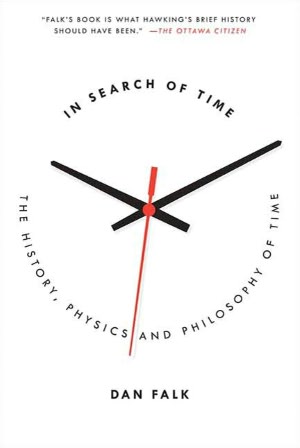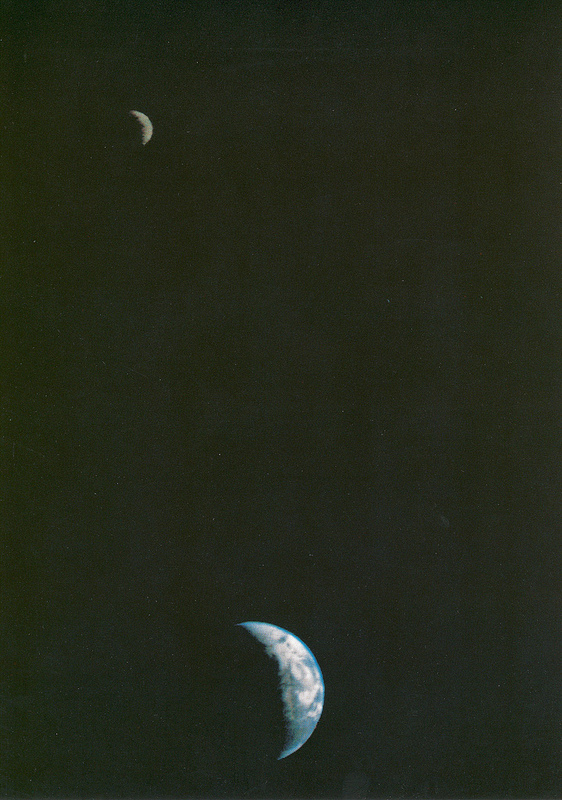“To be human is to be aware of the passage of time; no concept lies closer to the core of our consciousness.”
 For millennia, humans have sought to make sense of time, to visualize it, to ride its arrow, to hack it, to understand biological connection to it. “Time is the very foundation of conscious experience,” writes Dan Falk in In Search of Time: The History, Physics, and Philosophy of Time (public library). “To be human is to be aware of the passage of time; no concept lies closer to the core of our consciousness.”
For millennia, humans have sought to make sense of time, to visualize it, to ride its arrow, to hack it, to understand biological connection to it. “Time is the very foundation of conscious experience,” writes Dan Falk in In Search of Time: The History, Physics, and Philosophy of Time (public library). “To be human is to be aware of the passage of time; no concept lies closer to the core of our consciousness.”And yet that awareness has a long history of friction — to mark and measure the passage of time has proven remarkably challenging. For instance, Falk traces the evolution of the calendar, our dominant system for collectively experiencing time:
The Gregorian calendar is one of the most successful ideas in the history of civilization. (Richard Dawkins might call it a successful ‘meme’ — a unit of cultural information that propagates over time.)
The Gregorian calendar is not the only timekeeping system invented by humankind — nor, as we’ll see, is it even (by some measures) the most accurate. But its story is a noteworthy one, an achievement centuries, even millennia, in the making. We saw in the previous chapter how early humans were captivated by — and began to follow — the regular motions of the night sky. By the time of the great ancient civilizations, such systematic observation had become a virtual industry; every culture would develop some sort of calendar for mapping out the year, based on their observations of the heavens and their own particular needs and priorities. The one that rules today — the Gregorian Christian calendar — exploits ideas from many different cultures, each with a unique perspective on the significance of the heavenly bodies and unique solutions to the problem of tracking their motions. In this chapter we’ll take a look at some of the challenges confronting would-be calendar makers through the ages, as they tried to tame the myriad of motions displayed by the sun, moon, and stars.

Like much of knowledge, the contemporary calendar, it turns out, is an additive innovation:
The first rudimentary steps toward tracking those celestial motions, as we’ve seen, may have occurred as early as the Paleolithic period. But it is only with the rise of the first civilizations — marked by complex, agriculture-based urban settlements with full-blown writing systems — that we can be certain that people were keeping track of days, months, and years. Making sense of those celestial cycles, however, is complicated by the fact that neither the number of days in the lunar cycle nor the number of lunar cycles in a year is a nice round number (indeed, not even a whole number). The lunar month, as mentioned earlier, is about 29 ½ days long (actually 29.5306); the average solar year (also known as the “tropical” year) is about 365 ¼ days long (actually a smidgeon less, at 365.2422 days). That these cycles did not fit neatly into one another was well known: back in the fifth century B.C., the Greek poet Aristophanes, in his play The Clouds, had the moon complaining that the days refused to keep pace with her phases.

These incongruent cycles is where it gets interesting:
Try dividing the length of the year by the length of the lunar month, and again you get a fractional number, greater than 12 but less than 13 — the true figure is close to 12.3683. Over the millennia, different civilizations tried every possible trick for reconciling these incongruent cycles. Some simply rounded the length of the month up to 30 days, a practice adopted by the ancient Sumerians; 12 such months yield a 360-day year, just 5 days (roughly) short of the true solar year. Others used a more precise length for the lunar cycle and then assumed there were exactly 12 months in a year: the result is a year that is 354 days long — 11 days short (roughly) of the true solar year. Adopt such a calendar, and each New Year’s celebration will be 11 days earlier than it was the year before. A midsummer celebration would become a midwinter celebration after just 16 years.The rest of In Search of Time, a fine addition to these essential books on time, is just as fascinating an untangling of the basic fabric of our existence, exploring everything from the science of time travel to the persistence and mechanisms of memory to the inevitability of impermanence.
Any calendar system that uses the phases of the moon to track the months but also attempts to reconcile those months with the cycle of the seasons is called a luni-solar calendar. The Babylonians adopted one such system. A new month was determined by the first sighting of the crescent moon in the western sky — a practice that continues in Muslim nations to this day (notice how many Muslim nations feature the crescent moon on their flag). To keep the months in step with the solar year, the Babylonians employed a cycle in which seven 13-month years alternated with 12 years of just 12 months. The result was a 19-year cycle known as the Metonic cycle, after the Greek astronomer Meton of Athens, who lived in the fifth century B.C. (Meton discovered that 235 lunar months amount to almost exactly the same interval as 19 solar years; a calendar based on this cycle would deviate from the true solar year by just 1 day every 219 years.) Beginning in the second millennium B.C., the extra month would be added — “intercalated” — following either the sixth month (Ululu) or the twelfth month (Addaru) of the Babylonian calendar. We have a record dating from the nineteenth century B.C. of King Hammurabi’s decree on just such an adjustment:
This year has an additional month. The coming month should be designated as the second month Ululu, and wherever the annual tax has been ordered to be brought in to Babylon on the 24th of the month of Tashritu it should now be brought to Babylon on the 24th of the second month of Ululu.
The Jewish calendar is closely modeled on the Babylonian. (The mutual influence of the two cultures can be traced back to the sixth century B.C., when Babylon, under Nebuchadnezzar II, conquered Jerusalem; the Jewish people spent the next 70 years or so in exile.) The Jewish calendar, like the Babylonian, is built on the nineteen-year Metonic cycle, with its combination of 12-month and 13-month years. Within that cycle, the lengths of certain months can also vary, so that a “regular” year can be 353, 354, or 355 days long, while a leap year (containing an extra month) can be 383, 384, or 385 days long. (This is why the date of Jewish holidays such as Hanukkah leaps around so much with respect to the Gregorian calendar.)
 Brain Pickings has a free weekly newsletter and people say it’s cool. It comes out on Sundays and offers the week’s best articles. Here’s what to expect. Like? Sign up.
Brain Pickings has a free weekly newsletter and people say it’s cool. It comes out on Sundays and offers the week’s best articles. Here’s what to expect. Like? Sign up.

No comments:
Post a Comment